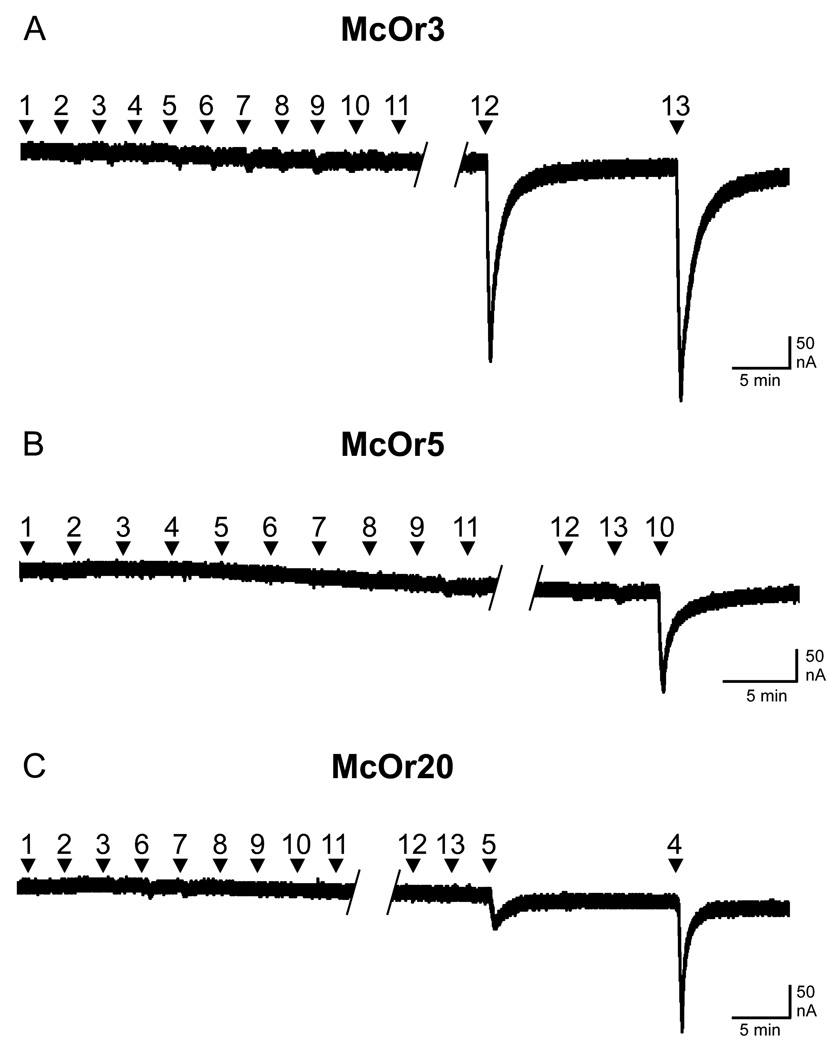Fig. 2.
Change in electric current induced by candidate odorant receptors, expressed in Xenopus oocytes, in response to pheromone components of Megacyllene caryae. Frog oocytes that expressed receptors A) McOr3, B) McOr5, and C) McOr20 were sequentially challenged with 30 µM of each of the following pheromone components (applied for 20 s): 1. (2R,3R)-2,3-hexanediol, 2. (2S,3S)-2,3-hexanediol, 3. (2R,3S)-2,3-hexanediol, 4. (2S,3R)-2,3-hexanediol, 5. (R)-3-hydroxyhexan-2-one, 6. (S)-3-hydroxyhexan-2-one, 7. (S)-(−)-limonene, 8. (R)-(+)-limonene, 9. (−)-α-terpineol, 10. 2-phenylethanol, 11. citral, 12. (R)-2-methylbutan-1-ol, and 13. (S)-2-methylbutan-1-ol. Diagonal hatching indicates short breaks in recording.

